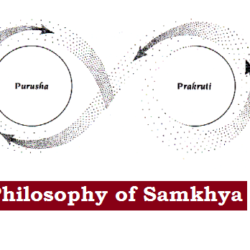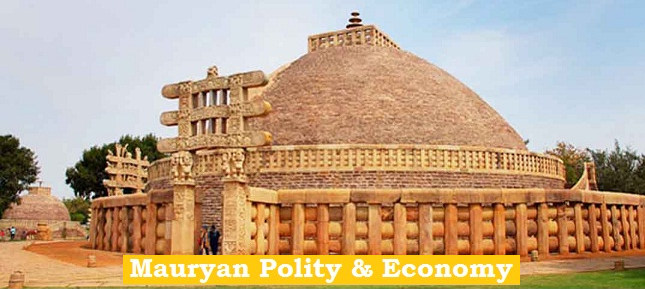
Chandragupta Maurya with the help of Chanakya took advantage of the growing weakness and unpopularity of Nandas to overthrew last ruler of Nanda Dynasty- Dhananand in 322 BC to establish his kingdom over Magadha.
He defeated Seleucus Nicator, the Greek Viceroy of Alexander, established marriage alliance and took control of western areas of Indus. It was the starting of Indo- Greek relationship. The account of Megasthenes (‘Indica’) and Kautilya (‘Arthshastra’) provide the details of Mauryan Empire.
The Buddhist literature, the ‘Mahavamsa’ and ‘Dipavamsa’ give a detail account of Chandragupta Maurya.
The ‘Mudrarakshasa’ is a play written by Vishakhadatta, referred Chandragupta as ‘Vrishala’ and ‘Kulahina,’ which means a person of humble origin.
They ruled over almost whole of subcontinents leaving some southern parts Deccan.
Bindusara:
- Chandragupta Maurya was succeeded by Bindusara, who continued the Greek relationship.
Ashoka:
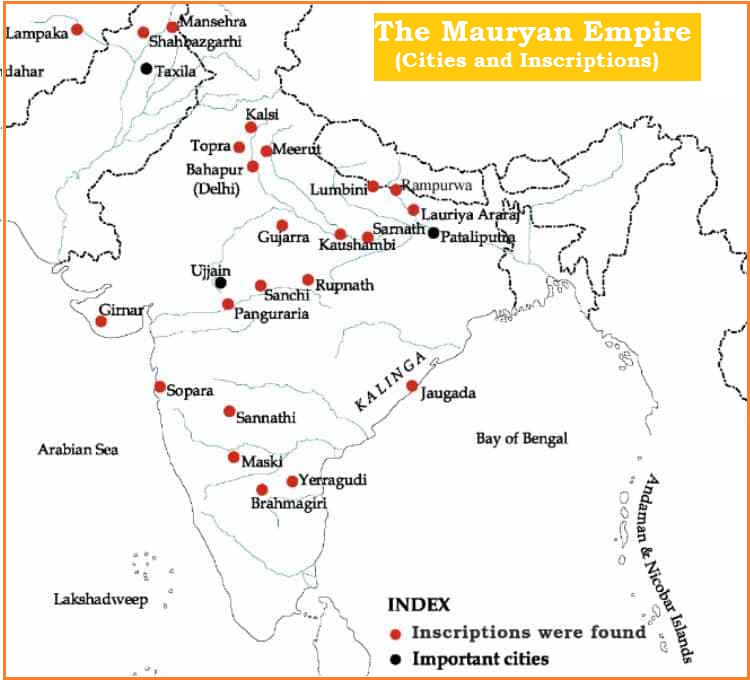
- Bindusara was succeeded by Ashoka (273 BC), who after Kalinga, embraced Buddhism, abandoned the policy of war and started cultural conquest through his policy of Dhamma.
- He tried to conquer kingdoms and tribal people ideologically. He sent ambassadors of peace, missionaries for propagation of Buddhism to consolidate the empire.
- However, it did not make him extreme pacifist. He did not pursue the policy of peace for the sake of peace under all conditions. He even threatened people who violated the Dhamma policy.
- He is probably the first Indian king to speak directly to the people through his inscriptions. They were written in Prakrit language and written in Brahmi script. In the North-Western part they were written in Kharosthi script and in Afghanistan, even Aramaic, Greek was used. These edicts were decoded by British archeologist and historian James Prinsep.
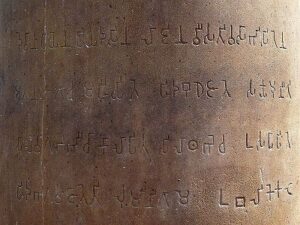
e.g Rummindei Pillar Inscription which marks the Ashokan travel to the Buddha’s birthplace and personally made offerings. He then had a stone pillar set up and reduced the taxes of the people in that area.
- He mentioned himself as ‘Devanampiya’ and ‘Piyadasi’ meaning beloved of the gods.
- He brought about the political unification of the country. He bound it further by one dharma, one language and one script- Brahmi.
- He did not try to foist his Buddhist faith on his subjects and followed a tolerant religious policy.
- His policy of peace, non-aggression and cultural conquest had no instances in the history.
Mauryan Polity
- The king was assisted by a council of members (mantriparishad), who were noted for their wisdom.
- The important functionaries were called ‘Tirthas’, like minister (mantrin), high priest (purohita), commander-in-chief (senapati), crown prince (yuvaraj), etc.
- Rajjukas were the officers for land measurement and fixing their boundaries. They were also given power to punish the guilty and set free the innocents.
- Mauryans established a well organised administrative system. The empire was divided into a number of Provinces, which were further divided into smaller units, village being the smallest headed by village head (Gramika).
- An orderly legal system was established with a hierarchy of court system based on Varna system, Kantaksodhan (court between individual and the state)
- They maintained a large bureaucracy for administration. There were separate departments looked after by respective bureaucrat called ‘Adhyaksha’. There were committees for the administration of urban areas looking after separate areas like sanitation, care of foreigners, weight and measurement, etc.
e.g: Panyadhyaksha (commerce), Pautavadhyaksha (weight and measurement), Sitaadhyaksh (agriculture) - They were backed by an elaborate espionage system to spy the anti-state elements. The spies were called ‘Gudhapurusha’.
- The empire maintained a huge army, the most striking feature of the time, which was administered by a board of officers.
Mauryan Economy
- Mauryans established a sound financial system by controlling almost all the economic activities in the realm.
- There were superintendents (Adhyakshas) to regulate the economic activities– agriculture, trade and commerce, crafts, mining, etc.
- This period constitute a landmark in the system of taxation. They had strong machinery for assessment, collection and storage taxes.
- There were taxes for land (Bhaga), animal, irrigation, sales, trade, etc. Taxes were paid in cash (punch marked silver coins) and in grains.
- Shudras and tribes were incorporated in agricultural operation in order to bring virgin soil (Sita Land or Crown Land) under cultivation.
- They introduced uniform monetary system and use of punch- marked silver coins (with symbols of peacock, hill and crescent) helped the collection of taxes and payment to officers with development of trade and commerce.
Mauryan Art and Architecture
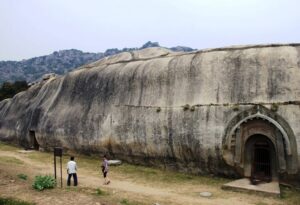
Barabar Hills
- Mauryas made a remarkable contribution to the art and architecture. They introduced stone masonry on a wide scale.
- Stupas were built across the Mauryan Empire to preserve the relics of Buddha. The most famous Stupas are at Bharhuta and Sanchi. The royal palace of Chandragupta Maurya (discovered in Kumharar, Patna), Ashokan pillars, four lion capital at Sarnath (later adopted as national emblem) and Sanchi are fine specimens of Mauryan art and architecture.
- The artisans of Mauryan period carved caves from rock as a residing place for monks. Rock cut Chaitya caves in the Barabar Hills (near Gaya) and Nagarjuni Hills are earliest examples.
- Burnt bricks were used for the first time in North Eastern India.
Fall of Mauryan Empire
- After the death of Ashoka, the empire started disintegrating with his viceroys and vassals declaring independence.
- Brahmanical reaction to policy of Dhamma and non-violence and support to Budhhism.
- Financial crisis, due to maintenance of a huge army and bureaucracy and grants to Buddhist monks.
- Mis- governance, by wicked bureaucrats exploiting people
- Establishment of new kingdoms, as material culture spread to outlying areas
- Neglect of north west frontiers, Synthians forced others (Parthians, Shakas, and Greeks) to move towards India and series of invasion occurred in the region. No move like construction of the Great Wall of China was taken by them.
After
the death of Ashoka, the empire started disintegrating, and finally the last
king Brihadratha was killed by a
Brahamana general Pushyamitra Shunga
in 185 BC. Shungas were succeeded by Kanvas, who were also brahmanas.

 Home
Home Syllabus
Syllabus Contact Us
Contact Us







